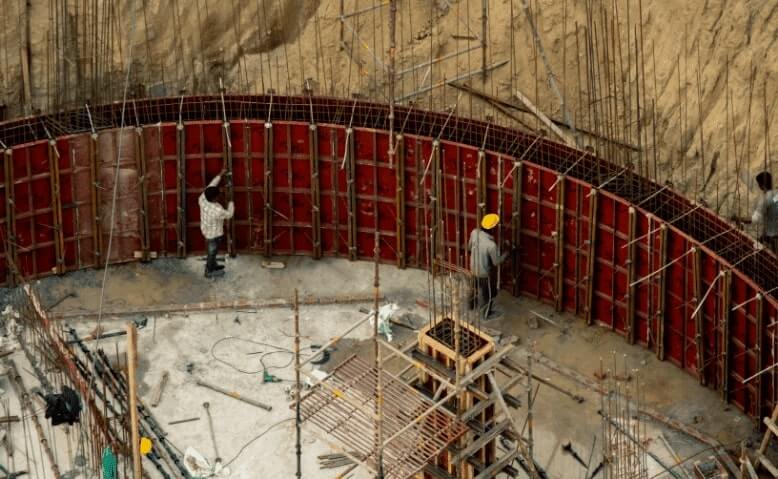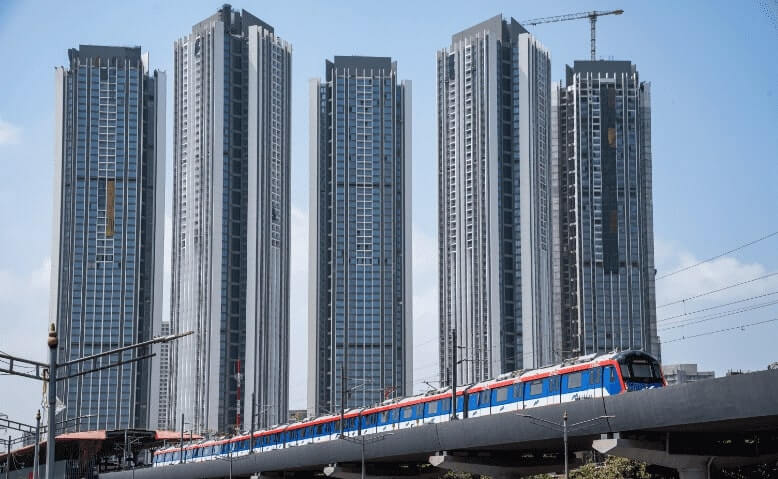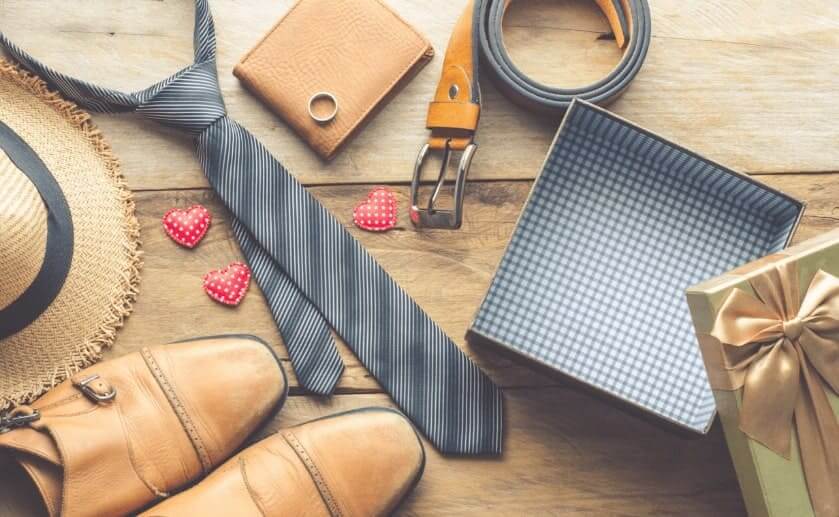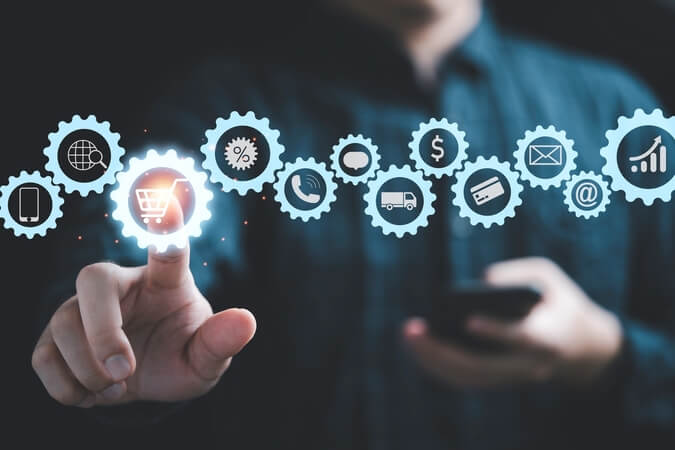How CPOs of Infrastructure Construction Project Developers in India Can Reduce Costs by 11%

How CPOs of Infrastructure Construction Project Developers in India Can Reduce Costs by 11%
Given their complexity, unique site conditions, massive scale, and long timelines, infrastructure projects often entail the potential for cost overruns—as seen in over 50% of Asian construction projects1. So, optimizing costs without compromising quality and duration is indispensable for the CPOs of infrastructure construction project developers in India.
This article discusses a five-pronged strategy to reduce infrastructure construction project costs by 11%.
Strategy Spotlight: The 5 Pillars
As outlined below, reducing project costs is a practice of streamlining key construction cost drivers.
Material Costs (↓ 0.02%)
One of the biggest reasons for project cost escalation is the rise in the prices of construction materials, especially crucial components like structural steel and TMT steel bars, which account for almost 40% of these costs. Strategically consolidating the vendor base and forging stronger partnerships with a single supplier is one avenue for saving nearly 5% on material costs, potentially lowering the total project cost by 0.02%.
Civil Work Costs (↓ 0.04%)
Encompassing several activities, including excavation, site preparation, and reinforcement installations, civil works constitute approximately 20% of project expenditure. Here, too, by following the vendor consolidation approach, especially for suppliers of earthworks and foundations, infrastructure developers can save an additional 2%, which translates into a noteworthy 0.04% total cost reduction.
Procurement Process Costs (↓ 0.03%)
Representing over 10% of your bill of quantities (BoQ), delays in quote solicitation, order placements, and material deliveries can significantly inflate project estimates. By adopting catalog-priced pricing, which standardizes order and inventory management while easing payment processing, CPOs can downsize their massive procurement teams to 3, yielding 30% cost savings on labor expenses. This will rein in the project costs by an additional 0.03%.
Project Finance Costs (↓ 5%)
Considering how most infrastructure development projects are financed using debt—at times, to the extent of 80% of the project cost–at high-interest rates, with the ballpark figure averaging 10% compound interest, minimizing these interest payment outflows is another option. Embracing pre-engineered and pre-fabricated buildings is one way out. While initially, these innovative buildings will raise material costs by 10%, they will also help complete the construction schedule at least 10-15 weeks ahead of schedule. By saving 10% on 4 months of project finance costs, you stand to realize a substantial 5% net savings on project costs.
Indirect Procurement (↓ 5%)
Cost savings can also be achieved by bringing down indirect procurement costs involved in the acquisition of safety goods, electrical & cables, ductile iron pipes, and other items that support the core construction process. Consolidating the vendor base by singling out a single provider from the top construction raw material suppliers in India can save an additional 5% in costs after accounting for their 20% share in the project costs.
Charting a Cost-Efficient Course in Infrastructure Construction
Identifying the potential causes of cost overruns is important for CPOs of infrastructure construction projects to implement efficient plans and drive business growth. By executing vendor consolidation strategies, adopting catalog pricing, and using pre-engineered buildings, they can improve their bottom line by a colossal 11%. Moglix can help you achieve this and more through its EPC solutions, which end-to-end automate your source-to-site procurement processes for all types of infrastructure projects.
Write to us at info@moglixbusiness.com to learn more.
5 Ways CEOs of Infrastructure Construction Project Developers in India Can Improve EBITDA

5 Ways CEOs of Infrastructure Construction Project Developers in India Can Improve EBITDA
CEOs of infrastructure construction project developers in India face many hurdles in running their businesses, including cost escalation, quality issues, project delays, and regulatory hurdles. This can severely impact the company’s EBITDA (earnings before interest, taxes, depreciation, and amortization), a key profitability and efficiency indicator.
This article will discuss five ways CEOs can optimize their procurement processes to improve their EBITDA margins further.
5 Strategies to Boost EBITDA for Construction Project Developers in India
A higher EBITDA signals a better capacity to generate operational profits and cash flows and can be improved through the following methods:
Vendor Consolidation
Reducing and consolidating the supplier base available for procurement of construction raw materials, such as TMT bars, structural steel, fabrication, and ductile iron pipes, can help achieve economies of scale. This translates into lower logistics expenses without compromising the supply’s quality, leading to better profitability margins and a simplified contract management system.
Digital Project Management
Implementing digital project management tools like a RACI (Responsible, Accountable, Consulted, and Informed) matrix can facilitate better construction schedule mapping and reduce task redundancy, stemming cost overruns. Using the matrix; the project developers can distinctly define the roles and responsibilities of their suppliers, establishing clear communication, transparency, and accountability among all the stakeholders.
Supplier Capability Mapping
Thoroughly assessing India’s top construction raw material suppliers and their capacities before awarding the project is another way to improve EBITDA margins. Supplier mapping involves a comprehensive evaluation of the vendor’s competence, delivery timelines, quality standards, and compliance records, which enables improved decision-making and risk management. By further defining the credit terms and payment cycles, developers can minimize supplier disputes and cash flow problems.
Inventory Optimization
Another way to enhance profitability is to optimize the inventory levels of the construction raw materials and semi-finished goods and reduce their holding costs by fully utilizing the limited storage space. Inventory management techniques like just-in-time (JIT) for pipes, electricals, and cables can reduce wastage and product obsolescence by closely matching the inventory levels to the production schedule, supplier capacity, and product demand, eliminating the risk of stock-outs that can delay the project’s completion.
Pre-Engineered Buildings (PEBs)
Unlike conventional buildings, PEBs are factory-made, standardized structures assembled on-site, sometimes shortening the project schedule by almost 10-15 weeks. Using them can result in significant cost savings, better quality control, and higher energy efficiencies, crucial in raising construction EBITDA by a colossal 10-15%.
Achieve Operational Excellence with Moglix
Adopting the outlined strategies, including supplier mapping, inventory optimization, and digital management, can aid infrastructure construction companies in improving their business performance.
However, an easier way to gain a competitive edge is to implement Moglix’s EPC solution, which end-to-end automates and streamlines your supply chains, enables vendor consolidation and catalog-based buying, and centralizes all procure-to-pay processes on a unified platform.
Write to us at info@moglixbusiness.com to learn how we can take your business to new heights.
Top 10 Corporate Gifting Ideas That Can Never Go Wrong

Top 10 Corporate Gifting Ideas That Can Never Go Wrong
The corporate gifting market is currently worth $242 billion and is expected to exceed $3 billion within the next two years. It not only retains customers but also leads to new customers—27% of organizations say that giving gifts led to their clients referring their firm to other people.
Additionally, 70% of the individuals are more likely to work harder if they receive a holiday gift from their employer. In fact, holidays are the most popular business gift-giving occasions (51%), followed by customer appreciation (34%), and employee recruiting (27%).
But what do you give your employees and clients to drive these results? Read along as we talk about the top ten corporate gifting ideas that can never go wrong.
10 Corporate Gifts that Boost Brand Equity
Gift cards, spa products, food and wine, and co-branded items are among the most popular categories of corporate gifts. Moreover, gifts such as power banks, notebooks, caps, and T-shirts provide the greatest return on investment in terms of engagement on social media.
Here are some more trending gift ideas that you can use to strengthen client relationships and motivate your employees:
- Food baskets: According to a survey, 46% of the respondents said they have given food-based gift baskets as corporate gifts. Cookies, sweets, and chocolates are among the most popular food subcategories.
- Beverages: There’s a rising trend toward a more sober-conscious lifestyle, plus non-alcoholic drinks are easier to ship as a mocktail kit.
- Gift cards: Digital transactions have increased since the COVID pandemic. As a result, digital gift cards are one of the most popular gifts among employers — in fact, they are the most desired gift.
- Care Package: As remote work has become a significant part of the professional landscape, work-from-home (WFH) care packages and self-care gifts have emerged as standout corporate gift choices.
- Movie Night Box: Gifts that encourage increased family time are memorable. So, consider sending a budget-friendly gift package with a movie night theme.
- Tech-Savvy Gifts: Tech products such as Bluetooth speakers and wireless headphones have gained popularity over recent years.
- Personalized Stationery: Personalized gifts have shown a 17% higher response rate compared to non-personalized alternatives. So, you can customize stationery items to reinforce your brand identity among clients.
- Luxury Gift Basket: Over 45% of employees have reported that the value of the gift had a direct effect on their perception of the company. This demonstrates that investing in high-quality, valuable gifts can positively affect brand image.
- Sustainable and Eco-Friendly Gifts: Nearly 70% of US and Canadian consumers value a brand’s sustainable or environmentally friendly practices. An eco-friendly present not only demonstrates your dedication to environmental responsibility and fosters loyalty.
- Experiences: People value experiences over things. They are also usually budget-friendly, therefore. Some trending experience-based gift ideas are spa treatments, concert tickets, and wine tastings.
Source Trending Corporate Gifts from Moglix
While sourcing these trending gifts, consider the following factors:
- Market reputation
- Product quality
- Product price and delivery charges
- The variety of products available
- Last-mile delivery, pan-India shipping
Last-mile delivery is the process of moving a parcel from a transportation hub to its final destination — the customer’s workplace or the employee’s apartment. A smooth and effective delivery process helps improve your brand image and improves employee retention. So, make sure that your corporate gift provider offers features such as last-mile delivery, and pan-India shipping, among others.
Seal the Deal with a Corporate Gift
Corporate gifts allow companies to convey gratitude to their clients and employees, and build a stronger relationship with them. Furthermore, a corporate gifting provider such as Moglix ensures that you have a smooth gifting journey by providing over 100 gifting ideas, from 50+ brands, delivered across 25000+ pin codes all over India – on time every time, for your employees, clients, suppliers, distributors and dealers. Get a quote now for your corporate gifts.
Gifting Etiquette: Navigating the Do`s and Don`ts of Corporate Gifting

Gifting Etiquette: Navigating the Do`s and Don`ts of Corporate Gifting
You’re considering a corporate gift after sealing a deal with a top-tier client. Wise choice! A thoughtfully chosen gift expresses gratitude and fosters trust and loyalty; with Forbes highlighting that just a 5% rise in customer retention can amplify profits up to 95% and a resounding 80% of executives attesting to the positive ROI of business gifts, the importance is evident.
We provide some do’s and don’ts to boost your corporate gifting efforts.
Do’s for effective corporate gifting
- Prioritise thoughtfulness and personalization: Personalised gifts, like those sleek engraved pen sets or custom leather portfolios, show you’ve put in effort. They’re the essence of proper gifting etiquette that professionals often discuss.
- Embrace unexpected timing: There’s something delightful about receiving a gift on an unusual day. Think World Gratitude Day or a random Tuesday. It’s a fun twist on the standard corporate gift occasions and always creates a buzz.
- Choose quality over cost: Imagine the lasting impression a handcrafted premium watch or a fine cashmere scarf would leave. It’s this level of quality that truly exemplifies the gold-standard business gifting guidelines.
- Extend to the inner circle: How about surprising an employee’s family with a gourmet hamper or a movie night-in bundle? Doing so genuinely acknowledges all corporate gift recipients, fostering more profound connections.
- Value their time with practical gifts: Gifting items like a top-notch planner or a digital assistant subscription isn’t just thoughtful. It’s a nod to accurate professional gifting that prioritizes the recipient’s daily needs.
Don’ts for effective corporate gifting
- Avoid trend-driven presents: While tech fads come and go, a timeless leather-bound journal or an elegant desk piece endures. This strategy embodies the best proper gifting practices.
- Refrain from offering low-quality items: People cherish flimsy trinkets. They can misrepresent intentions and can stray away from genuine gift etiquette rules.
- Beyond generic gift cards: How about gifting a boutique bookstore token or an artisanal workshop? Such gifts encapsulate the spirit of ethical gifting.
- Be mindful with food and drink: With the plethora of dietary preferences, it’s essential to tread carefully. It showcases a level of thought aligning well with the intricacies of gifting in the workplace.
- Steer clear of time-consuming gifts: Gifts that seamlessly integrate into daily life without fuss are ideal. They’re at the heart of a thoughtful corporate gifting experience.
To truly master the nuances of corporate gifting, one must know where to find the best options. And guess what? The wait is over. India’s most awaited corporate gifting festival is here. Dive into many remarkable choices at Moglix Corporate Gifting Festival, which is India’s Biggest Corporat eGifting Festival. Know more, select, and elevate your gifting game today!
How Should COOs of Infrastructure Project Developers Map Supplier Capabilities for Fabrication?

How Should COOs of Infrastructure Project Developers Map Supplier Capabilities for Fabrication?
Fabrication forms the heart of infrastructure development projects due to its outsized role in combining design engineering expertise, precision manufacturing, and quality assurance—elements vital for durable construction and manufacturing. However, it can be quite challenging as well because infrastructural projects require customized components that must strictly adhere to the scope of work specifications.
So, to avoid cost overruns and project delays and reduce information asymmetries, COOs of infrastructure project developers must essentially understand the specific capabilities of their suppliers to undertake streamlined operations.
This article outlines the main principles underlying supplier capability mapping for fabrication for better contract negotiation and project success.
4 Guiding Principles for Supplier Capability Mapping
Assessing supplier capabilities in terms of material quality, resource adequacy, and use of technology is crucial to maintaining efficient and resilient supply chains. The mapping framework must employ the following principles:
Approvals and Quality Standards
Undertaking quality assurance is paramount in fabrication to eliminate the use of subpar components and ensure the air-tight structural integrity of the entire project. COOs of infrastructure project developers should assess suppliers against the following standards:
- Quality Management System (QMS) (ISO 9001:2015): It is one of the most recognized ISO standards, which certifies that the vendors have implemented well-defined, efficient processes spanning laser cutting, forming, casting, welding, forging, and export crating to maintain the quality of fabricated components as per the applicable regulatory and customer requirements.
- Environmental Management System Compliance (ISO 14001:2015): As manufacturing supply chains entail massive resource movement, minimizing their environmental impact and waste is necessary. COOs can reduce their project’s ecological impact by choosing suppliers who follow environmental management standards.
- Occupational Health and Safety Management (ISO 45001): As worker safety is non-negotiable, COOs should ensure their suppliers are compliant with ISO 45001, which has recently replaced the BS OHSAS 18001 standard. It is the first international standard concerned with reducing workplace injuries and promoting occupational safety and worker health.
- Welding Standards: Supplier compliance with international standards such as ISO 3834 and AWS D1.1, which detail the appropriate quality requirements for welding metallic minerals and steel, respectively, and may even be stated as a pre-qualification requirement, assures COOs that they are sourcing structurally sound components.
- Fabrication Standards (IS 7215): It is ideal to select suppliers adhering to this local BIS standard, as it outlines the dimensional limits for manufactured steel structures and ensures all project specifications are met without disregarding compliance.
Credit Ratings
High credit ratings signify strong financial health, which is essential to support an uninterrupted supply of the requisite fabrication materials and prevent any undue delays or quality concerns. Project developers can evaluate their suppliers’ working capital availability and financial strength by scrutinizing their cash flow statements over the past six months.
Disruption Proofing
Given the long gestation period for infrastructure projects, COOs must account for supplier resilience in the face of unforeseen disruptions from natural disasters, conflicts, or pandemics like COVID-19. Metrics like Time to Sustain (TTS) and Time to Recover (TTR) help determine the vendor’s capability of withstanding extended periods of strain and the time required to resume normal operations after a disruption, respectively.
Geographical Coverage
As infrastructure projects are often spread across diverse geographical areas, including remote locations, COOs must assess whether suppliers can serve these challenging terrains cost-effectively, without compromising on project timelines. Multi-modal logistical support through roads, ports, airports, highways, and rail is a huge positive.
Ensure Seamless Supplier Partnership for Project Success
Successful infrastructure project execution hinges on the COOs’ ability to strategically map supplier capabilities and relationships. Moglix Business’ one-stop custom manufacturing solution serves as a valuable tool for project developers seeking reliable suppliers that not only meet the necessary quality and regulatory requirements but also exhibit strong financial position, resilience, and overall EPC support.
Write to us at info@moglixbusiness.com to learn how we can collaborate to enhance your operational efficiencies.
4 Trending Corporate Gifting Ideas of 2023

4 Trending Corporate Gifting Ideas of 2023
The global corporate gifting market size was valued at more than $75,00,00 million in 2022, expected to reach $1,20,00,00 million by 2028. This growth is largely attributed to the fact that corporate gifting is no longer restricted to the holiday season.
Corporate gifts are now sent all year round as they help build professional connections and maintain relationships with employees, customers, and partners. In fact, most companies send corporate gifts to their existing clients as a token of appreciation (50%) or to acknowledge an employees’ milestones (65%) — the two most popular corporate gifting occasion.
But what do you give your employees or clients that is meaningful yet trending in 2023? Continue reading to know!
4 Top Trending Gift Ideas This Season
Virtual Experiences
In 2023, businesses will seek out virtual experiences to present as corporate gifts as remote work becomes more prevalent In fact, virtual experiences are among the five most popular corporate gift items.
Virtual cooking lessons, wine tastings, and team-building events will all be trending options as they allow teams to connect and bond even when they are not physically present.
Gift Cards
As experiences become more common, gift cards are growing in popularity. Gift cards, both digital and physical, are likely to dominate gifting categories over the next year.
Plus, retailers may be able to capitalize on a sizable untapped market by making gift cards more personalized.
Eco-friendly Gifts
There has been a change in recent years toward valuing sustainable processes and products, and eco-friendly business gifts will be more popular than ever in 2023. Almost 70% of consumers regard a brand’s environmentally friendly or sustainable initiatives.
Furthermore, by providing eco-friendly presents, businesses indicate that they care about more than just money. They convey a commitment to making a positive environmental effect and supporting sustainable practices.
Inclusive and Diverse Gifts
When you incorporate diversity, equity, and inclusion (DEI) concepts into your gifting strategy, you create an inclusive environment in which everyone feels noticed, appreciated, and respected.
Over 45% of the companies currently support DEI through corporate gifting. As a result, consider collaborating with local craftspeople and companies from varied communities to empower them and enhance your brand reputation.
How to Source Corporate Gifts?
Over 50% people outsourced part or all of their corporate gifting requirements. Organizations that manage end-to-end corporate gifting internally experience more obstacles than those that outsource (through a service provider or a gifting platform).
Outsourcing to a gifting service allows firms to centralize and streamline corporate gifting. It also reduces expenses and creates more engaging gifting experiences by easing friction points such as inventory management and shipping.
However, you should keep some factors in mind while choosing your outsourcing partner, such as:
- Access to multiple brands and retailers
- Personalization options
- Features to manage gift inventory, storage, and shipping
- Range of products
- Shipping options such last-mile delivery and pan-India shipping
Last-mile delivery refers to transporting the goods to the end consumers — usually their houses. It plays a vital role in corporate gifting, as a negative delivery experience can result in dissatisfied recipients, negative reviews, and the loss of future business opportunities.
While seamless and efficient last-mile delivery solutions can lead to enhanced customer loyalty, increased sales, and a competitive edge for businesses.
Get Trending Gifts Items with Moglix
Corporate gifting is no longer limited to the festive season. Instead, it now offers a year-round opportunity to create and strengthen relationships, which is vital in the current work culture.
A gifting provider such as Moglix streamlines your entire corporate gifting journey. It empowers decision-making and removes obstacles by offering features such as access to over 100 brands, pan-India last-mile deliveries, order tracking, and customer support. Get a quote now and start your corporate gifting program.
The Future of Personalization: How Generative AI is Shaping Customer Experiences

The Future of Personalization: How Generative AI is Shaping Customer Experiences
“Personalize or Perish.” One of the leading newspapers aptly summarizes the critical nature of personalization 2.0, or hyper-personalization for businesses.
We live in an era where customers expect businesses to understand their wants and needs. Today, companies must meet customers’ needs and anticipate and exceed them. And for this, they must pivot to a digital-first mindset to create stronger, more authentic customer interactions.
P2P Automation: The Backbone of Resilient Businesses

P2P Automation: The Backbone of Resilient Businesses
Procurement plays a crucial role in delivering cost savings and driving business success. And with over 70% of surveyed CPOs[1] expecting procurement risk levels to remain elevated for the foreseeable future, investing in automating P2P processes has become a necessity.
Procure to pay (P2P) processes enable businesses to document their complex supply chains right from need-based order placement to final payments, affording greater visibility, enhanced operational efficiency, and improved supplier relationship management.
In this article, we will outline all that falls under the ambit of P2P solutions and how automating them can help create streamlined supply chains and resilient organizations.
Understanding Procure to Pay (P2P)
Alternatively called purchase to pay, procure to pay (P2P) is a systemic process involving the decision to procure goods, making purchase requisitions, accounting for them, and paying the suppliers. It aims to align and integrate the procurement and accounts payable functions of an organization to allow for superior supply chain management. It includes the following components/stages:
- Requisition: Based on the business needs, a purchase requisition order is made for the identified product to various suppliers.
- Contract Management: After selecting a suitable supplier, they are sent a formal purchase order. Conversely, suppliers share their invoices with the business.
- Invoice Approval: Once the products are received, the company matches the order against the invoice and approves it if no discrepancies are found.
Payment: The accounts payable team processes the invoice and releases the payment.
The Need to Automate Procure-to-Pay Processes
As the P2P process has several touchpoints, it is prone to inefficiencies, delays, backlogs, and repetition. A poorly designed procure-to-pay process can escalate costs due to inconsistent/late payments, resource wastage for manually meeting unforeseen bottlenecks, and supplier payment disputes.
Poor P2P visibility also raises regulatory and tax compliance issues, further damaging the organization’s credibility. So, by automating and optimizing their workflow using procure-to-pay software, businesses can control maverick spending, improve purchase efficiencies, and make their supply chains intelligent and agile.
Benefits of Procure-to-Pay (P2P) Automation
Technological advances such as robotic process automation (RPA), machine learning (ML), artificial intelligence (AI), and the like are transforming the way P2P processes are run. By analyzing historical trends to automate procurement and improving supplier selection, they are yielding massive cost savings–as corroborated further by over 40% of CPOs[2] vying to invest in procurement automation, such as procure-to-pay software. The key benefits of procure-to-pay optimization are as follows:
- Complete Visibility: End-to-end P2P automation entails maintaining a complete record of purchases, orders, and payments, which reveals data optimization opportunities, enhances supply chain visibility and transparency, and helps identify and resolve major disruptions.
- Reduces Costs: By deploying procure-to-pay software, companies can improve their forecasting and spend management, avoiding expensive spot buys. Automating P2P processes also helps organizations identify suitable suppliers, enabling better price negotiation. Consistent payments also reduce overall processing times and afford opportunities for availing discounts.
- Enhanced Efficiency: Procure-to-pay optimization reduces the scope for human errors caused by siloed databases and workflow systems. It centralizes procurement and payable processes, thereby streamlining workflows, improving financial accuracy, and enhancing efficiency.
- Prevents Frauds: As procure-to-pay software follows strict invoice matching and supplier selection rules, it helps minimize frauds like diverging significantly from existing prices for immediate purchases or granting contracts to unqualified vendors due to personal relationships.
- Better Supplier Relationships: Procure-to-pay software automates invoice and payment processing, ensuring suppliers can check their invoice status in real-time and get paid on time, further improving supplier management.
Embrace Moglix’s P2P Automation Solutions to Unlock Business Resilience
Moglix’s procurement solutions, such as P2P automation, serve as the backbone of resilient businesses, empowering them to navigate procurement challenges with agility and efficiency. Moglix has already helped India’s largest cement manufacturer achieve a massive 20% increase in efficiency by automating its P2P processes, thus reducing purchase requisition to purchase order times. Download the case study for more details or learn more about Moglix’s solutions.
Fortifying Supply Chains with Supplier Risk Management Strategy

Fortifying Supply Chains with Supplier Risk Management Strategy
Did you know that 88%1 of the world’s leading companies are not sufficiently protected against supply chain disruptions? As per this World Economic Forum report, including supplier risk management in your B2B supply chain management strategy is a key to building a resilient supply chain.
B2B supply chain management is the process of identifying, assessing, mitigating, and monitoring potential threats and opportunities your suppliers pose. So how can supplier risk management shock-proof your supply chain? Continue reading to find out.
Mitigating Supply Chain Disasters
Supplier risk management is about proactively identifying potential risks, creating strategies to mitigate these risks, and building a supply chain that can withstand disruptions and adapt to changing circumstances.
Why is it important? Besides contributing to the company’s overall growth and sustainability in an uncertain business environment, supplier risk management can help a company in the following ways:
- Reduce reliance on a single supplier and diversifying sources of procurement.
- Helps identify potential disruptions and develop strategies to mitigate their impact, ensuring continuity of operations.
- Minimize costs due to production delays, expedited shipping, or sourcing from alternative or expensive suppliers by anticipating and preparing for potential risks.
Boosting Business Performance Through Supplier Risk Management
Over 50% of businesses consider supplier collaboration a key focus to improve B2B supply chain management. Because it empowers them to make the supply chain more consolidated, resilient, and optimized, which results in the following benefits:
- Increased Visibility: While managing supplier risk, you’ll have access to real-time supplier data that can help identify and alert potential risks and opportunities in real-time. You could also get possible actions and outcomes based on supplier data and risk scenarios.
- Reduced Risk: A robust supplier risk management system ensures you rely on suppliers vetted and monitored for their performance and compliance. This can reduce the number of contact points and potential failure points in the supply chain.
- Increased Efficiency: You’ll observe positive changes in the quality of products because you’re now identifying and mitigating supplier performance issues before they impact your operations.
- Reduced Cost and Complexity: Supply chain management software simplifies the procurement process and reduces inventory and logistics costs by optimizing the order quantities, delivery schedules, and transportation modes.
Conclusion
Managing risks in modern, multi-tier supply chains is a complex challenge, as the probability and severity of risks are hard to predict. However, supplier risk management can help organizations adopt a structured approach to deal with known risks and prepare for unknown ones. One of the ways to implement supplier risk management is to partner with a trusted supply chain solutions provider, such as Moglix.
For instance, Moglix helped a leading chemical company in India to improve its supply chain metrics by consolidating its vendors, categorizing line items, and optimizing inventory. These solutions led to a 95% punctual delivery, a 15% quicker process, and a 6% spending reduction for the company.
If you are curious about how Moglix can help you manage your supplier risks and build a resilient supply chain, schedule a demo here.
Innovating the Road Ahead: Digital Trends Transforming the Automotive Supply Chain

Innovating the Road Ahead: Digital Trends Transforming the Automotive Supply Chain
Automotive vehicles are no longer mere metal on wheels; they have transformed into advanced, software-defined, GPU and chips-based, sensor-driven wheels—a transformation that will be propelled further with the adoption of electric vehicles (EVs), autonomous driving, and vehicle connectivity innovation. So, it is no wonder that these innovative technologies, which are expected to make the auto industry worth $300 billion by 2026[1], will also reshape its supply chains.
With OEMs and their supplier base already grappling with pandemic-brought raw material and chip shortages and evolving compliance burdens, reworking their supply chain MRO to adapt to these evolving technological changes while streamlining their operations has never been more essential. In this article, we will delve into the exciting future trends expected to reshape the Indian automotive industry by driving growth and efficiency in their supply chain processes.
4 Trends Revolutionizing Automotive Supply Chain MRO
The automotive industry can build sustainable, intelligent, and resilient supply chains that deliver improved visibility and enable data-driven decision-making by incorporating the following changes in their supply chain management software.
1. Digital Procurement Solutions
Automotive players are integrating tech-enabled solutions involving automation, artificial intelligence (AI), and machine learning (ML) into their procurement platforms to optimize demand forecasting, process differentiation, supplier selection, and contract management. These B2B supply chain management solutions help reduce lead times, improve supplier relationship management and collaboration, and enable faster data-driven decision-making, creating a more agile and responsive supply chain.
2. Connected Factories
In the Industry 4.0 era, the automotive industry has been turning to connected factories where production systems and manufacturing processes are interconnected through smart sensors and the Internet of Things (IoT). This enables the real-time generation, monitoring, and analysis of data that direct decisions regarding inventory levels, shifting production lines, and the prioritization of certain production runs. It also facilitates predictive maintenance, thus, minimizing downtime and improving supply chain MRO management.
3. Supply Chain Analytics
Automotive companies lacking end-to-end digitalization suffer over 20-25% production delays due to supply shortages, compared to 10-15% for the advanced players.[2] By deploying advanced analytics tools, OEMs can process vast troves of data to gain valuable insights into demand patterns, potential production disruptions, operational costs, supply chain efficiency levels, and supplier performance.
4. Sustainability and Green Supply Chains
As automotive has a huge role to play in advancing India’s goal of achieving net zero emissions by 2070, efforts are being made to green the supply chains by implementing responsible procurement practices and reusing and recycling materials in vehicle manufacturing. The move to hybrid and electric vehicles is also aimed at achieving sustainability, requiring the redesign of traditional supply chains.
Driving Forward: The Future of Automotive Supply Chains
Automotive B2B supply chain management is undergoing a massive transformation driven by automation, AI/ML models, predictive analytics, connected factories, and more. Embracing these trends will enable automakers to foster more efficient, sustainable, resilient, and intelligent supply chains while incorporating consumer demand for more innovation, electrification, and sustainability.
Moglix can enable you to achieve such transformations through its supply chain management software, as it has already done for a leading automotive OEM dealing with a fragmented supplier base, disintegrated procurement data, poor payment terms, and working capital mismanagement. Moglix’s one-stop procurement solution helped the OEM save 2.5% of its carrying costs by optimizing inventory management and consolidating its supplier base. Download the case study for finer details or learn more about Moglix’s supply chain MRO solutions.
